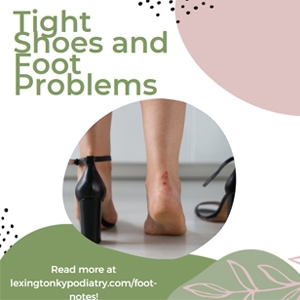We've all been there before. You buy a new pair of shoes that you absolutely love, but after wearing them for a few hours your feet start to hurt. So what's the deal? Why do our shoes have to be so tight in the first place? And more importantly, how can we avoid foot problems caused by tight shoes? If you're curious to find out the answers to these questions, then be sure to read on!
Bunions
Bunions are a deformity of the big toe joint, and they can be extremely painful. If you have bunions, you know just how uncomfortable they can be. While bunions are generally hereditary, wearing shoes that are too tight can cause bunions to become inflamed and irritated.
Shoes that are too tight put pressure on the big toe joint. This can cause the joint to swell and it is very painful. This can make it difficult to walk or even stand. If you have bunions, you may find that you can’t wear certain shoes or that you have to buy larger shoes to accommodate the deformity.
Wearing shoes that fit properly is the best way to prevent painful bunions. Make sure to buy shoes that are the right size and that don’t put pressure on the big toe joint or look for shoes that are made of a comfortable mesh material. You can also purchase a shoe stretcher to stretch the shoe out in the bunion area and prevent the shoes from causing too much pressure.
If you have persistent bunion pain, there are several things you can do. You can try over-the-counter pain relievers, such as ibuprofen or aspirin. You can ice the affected joint to reduce the swelling. Topical anti-inflammatories, such as Mod Pod Soothe, are also very effective in reducing pain and inflammation.
If your bunions are severe, you may need to see a podiatrist. A podiatrist can give you a cortisone injection to reduce the swelling. In some cases, surgery may be necessary to correct the deformity.
Blisters
Blisters are small pockets of fluid that form on your skin when it rubs against something else. When you wear shoes that don't fit properly, they can rub against your feet and cause blisters.
You can pop the blister yourself at home using a sterilized needle and apply a bandage afterwards. However, if you are diabetic, it is best to let your podiatrist take care of the blister because as a diabetic you are higher risk for infection.
Corns and Callouses
Wearing shoes that are too tight can also cause other problems, like corns and calluses. These are areas of thickened skin that develop when your feet are constantly rubbing against something. Corns usually form on the tops or sides of your toes, while calluses can form anywhere on your foot.
If you have poor circulation or are diabetic, insurance will cover to have your callouses trimmed every nine weeks. We do offer this as a self-pay service to patients who do not have either of the above-mentioned conditions.
However, if you want to try treating your callouses at home, we recommended using Mod Pod Heal. Heal is a urea-based healing balm that will soften and reduce dead skin build up.
Ingrown Toenails
Wearing shoes that are too tight is one of the main causes of ingrown toenails. When your toe is constantly squeezed into a small space, it can cause the nail to grow into the skin, causing pain, swelling, and infection.
Wearing shoes that fit properly and keeping your feet clean and dry can help prevent ingrown toenails.
If you do have an ingrown toenail, don’t try to cut it out yourself. Not only are you putting yourself as risk for infection, but you can’t clip your toenail back far enough to solve the issue without causing yourself extreme pain.
Instead, soak your toe in warm Epsom salt water with Mod Pod Relax. This lemongrass infused soak will help reduce inflammation until you can get an appointment with us or your local podiatrist.
Subungual Hematoma
If you wear shoes that are too tight, it can put pressure on your toenails and cause them to become discolored. This condition is called subungual hematoma, and it's basically a bruise under your toenail. When your toes bump against the end of your shoes, it causes microtrauma to the nail which leads the formation of the subungual hematoma.
Subungual hematomas can be painful, depending on the severity. They can also lead to other problems like infection. So, if you notice that your toenails are starting to look a bit discolored, it might be time to invest in a new pair of shoes.
If you’re like most people, you probably didn’t give much thought to the shoes you were wearing until after your feet started hurting. Turns out, that was a mistake. Wearing tight shoes can lead to all sorts of foot problems down the road. If you’re already experiencing some foot pain, don’t hesitate to call us at 859-264-1141 or schedule an appointment online with our team of experts – we can help get your feet back on track.

